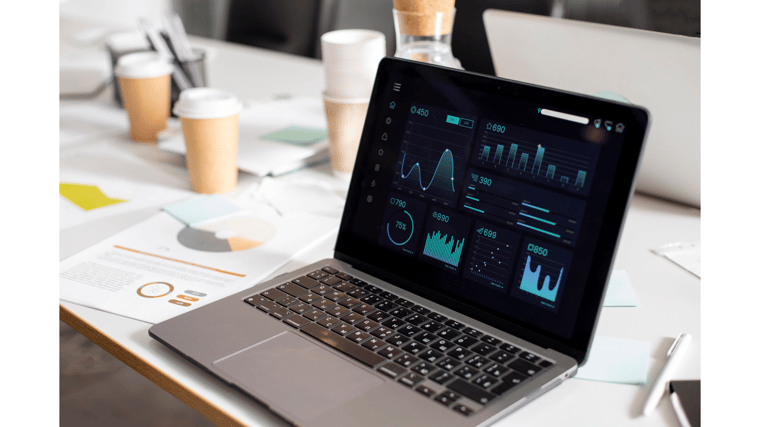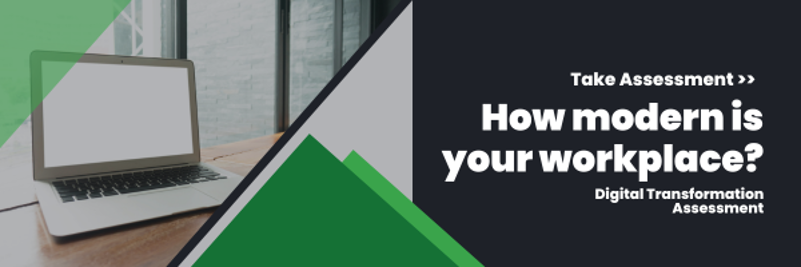In today’s data-driven world, organizations are constantly seeking ways to extract valuable insights from the vast amount of information at their disposal. Data can help them understand customer behavior, market trends and more.
Microsoft Power BI has emerged as a powerful data analytics tool to transform raw data into actionable insights, providing businesses with the tools they need to make informed decisions and thrive in a data-driven era.
Discover what Microsoft Power BI is, its key features and its benefits so you can uncover hidden opportunities, mitigate risks and stay ahead in today’s competitive landscape.
Read: What is Business Intelligence?
What Is Microsoft Power BI?
Microsoft Power BI is a business analytics platform that connects users to a wide range of data sources and allows them to analyze, visualize and share valuable insights from their raw data. Users can create interactive reports and dashboards, which help the company make data-driven, actionable decisions. Power BI is part of the Microsoft Power Platform, a suite of tools designed to help organizations analyze data, build solutions and automate processes.
The Six Types of Power BI
Power BI offers six versions that let users create and share business insights. Each version provides various features and capabilities.
- Power BI Desktop: Power BI Desktop is the free Windows desktop version that lets users create dashboards and reports by connecting and transforming data from multiple sources. It brings most components into a single platform, making it easier to develop BI and data analysis. However, users can’t share content on the cloud, and it only offers 1 GB of storage for reports and data.
- Power BI Pro: Power BI Pro is a cloud-based software, but it costs $10 per user a month. Along with the price, the biggest difference between Power BI Desktop and Power BI Pro is that Pro users can collaborate with others and distribute dashboards, reports and visualizations.
- Power BI Premium: Power BI Premium gives companies the space and capacity to share reports. The company decides its sharing capacity based on its number of users, workload needs and more, giving it the ability to scale up or down as needed. Reports can also be shared across the enterprise without individual users needing licenses.
- Power BI Embedded: Power BI Embedded is a cloud-based service that lets developers embed or add Power BI dashboards and reports to other applications either inside their own company or on an application meant for clients.
- Power BI Mobile: Power BI Mobile is dedicated to mobile devices, like tablets and smartphones, allowing users to connect and interact with data as long as they have Wi-Fi. Users can receive timely insights on reports and dashboards, regardless of location.
- Power BI Report Server: Power BI Report Server is an on-premises report portal so companies can publish reports after they’ve been created.
Power BI Components
Power BI is made up of several components:
- Power Query: Power Query is a data transformation tool that allows you to collect, transform and analyze data from multiple sources.
- Power Pivot: Power Pivot is a data modeling tool that uses Data Analysis Expression (DAX) language to create data models, establish relationships and calculate complex measures.
- Power View: Power View lets you create interactive graphs, maps, charts and other visuals. It can connect and filter different data sources to make reports.
- Power Map: Power Map is a 3D visualization tool that allows users to plot over a million rows of data on Bing Maps and show geospatial visuals based on longitude and latitude.
- Power Q&A: Power Q&A incorporates natural language processing, allowing users to ask questions about their data using everyday language so they can receive instant answers.
- Power BI Service: Power BI Service is a secure cloud service hosted on Microsoft Azure and allows you to publish dashboards and reports for easy sharing.
Read: Power BI for Business Intelligence
Key Features of Power BI
- Data connectivity: Power BI supports a diverse range of apps and data connectors, allowing users to connect to various data sources, including databases, Google Analytics, cloud services, Excel files and more. This flexibility ensures that users can easily access and integrate data for analysis.
- Data transformation and modeling: With Power BI, users can shape and transform their data with a user-friendly interface. It provides data cleaning, transformation and modeling capabilities, ensuring that data is prepared for meaningful analysis.
- Visualization: One of the most standout features of Power BI is its rich visualization capabilities. Users can create compelling charts, maps, graphs, tables and other visual elements to represent data trends and patterns coherently. Its drag-and-drop interface makes it easy to design visually appealing and informative reports.
- Dashboard creating: Power BI allows users to combine reports and visualizations into interactive dashboards. These customized dashboards provide a consolidated view of key performance indicators (KPIs) and enable users to monitor business metrics in real time.
- Artificial intelligence: Power BI uses a range of AI tools, including machine learning and Cortana, to detect trends and make predictions based on actionable insights. Cortana allows users to ask questions in natural language to access graphs and charts.
Benefits of Using Power BI
As you can see, Power BI offers numerous benefits to companies that utilize the platform:
- Data-driven decision-making: Power BI empowers companies of all sizes to make data-driven decisions by providing insights into key business metrics. This leads to more informed strategies and improved overall performance.
- Time and cost savings: The intuitive interface of Power BI reduces the time and effort required for data analysis and reporting. Automated updates and real-time data access contribute to efficiency gains and cost savings.
- Accessibility: Power BI’s cloud-based architecture ensures that users can access their data, reports and dashboards from anywhere in the world using various devices. This accessibility promotes collaboration and facilitates remote work.
- Scalability: Power BI is a scalable tool that can grow with the company’s evolving needs. Whether you’re a small-to-medium-sized business (SMBs) or a large enterprise, Power BI can accommodate varying data volumes and complexities.
- User-friendly interface: Power BI’s user-friendly interface makes it accessible to both technical and non-technical users. This empowers individuals across an organization to analyze and interpret information easily.
- Security and compliance: Power BI incorporates robust security features, protecting sensitive data. It complies with various industry standards and regulations, making it suitable for companies with stringent compliance requirements.
- Collaboration and sharing: Collaboration is at the core of Power BI. Users can share reports and dashboards with colleagues, making it easy for teams to make data-driven decisions together. Power BI also integrates Microsoft Teams, enhancing communication and collaboration within the organization.
Read: Using Microsoft Teams for Business Intelligence
Thriveon and Power BI
Implementing Power BI can be a time-consuming mission that can deter businesses from embracing Power BI. Thriveon and our IT professionals can help you implement Power BI into your company. Our IT project services follow a standardized, proven process that’ll keep your company on budget and on time.
Schedule a meeting with us now to see how Power BI can change your company.

